Kyoto’s Golden Pavilion Kinkaku-ji, first established as the third Ashikaga Shogun’s retirement villa, is now a Zen temple and popular tourist spot. The shining golden-leaved pavilion built in Muromachi-blend architecture houses the temple’s sacred Buddhist treasures. When sunlight shines upon it, the pavilion dazzles brilliantly (and blindingly).
Table of Contents
- All About the Golden Pavilion
- Exploring the Grounds of Kinkaku-ji
- Nearby Shops to Visit
- Access, Opening Hours, Admission Fees
- Takeaway
All About the Golden Pavilion
First things first, Kinkaku-ji isn’t actually the temple’s name. The Zen temple’s official name is actually Rokuon-ji, just like Ginkaku-ji’s official name is actually Jisho-ji.
Kinkaku-ji’s origins can be traced back to the Muromachi period when the Ashikaga Shogunate reigned supreme. The land where the temple was built on was originally owned by someone of the Saionji clan but third Ashikaga Shogun Yoshimitsu liked the place so much he claimed it for himself and built a retirement home for himself. As per his wishes, the retirement villa was converted into a temple upon his death.
The temple has suffered various bouths of destruction having been caught on fire several times in history including the Onin War. Several of the temple’s buildings are reconstructions, including the Golden Pavilion that was layered with more gold to increase its durability. Aside from that, the temple remains till this day at its original location.
For more about the Muromachi period, Ashikaga, and Onin War:
A Brief Look into History: Japan During the Medieval Period
※ World History Encyclopedia, "Heiankyo" "Kinkakuji" ※ Rinzai Sect Sokokuji School, "About Kinkakuji" ※ UNESCO, “Historic Monuments of Ancient Kyoto (Kyoto, Uji and Otsu Cities)”
The Significance of Gold
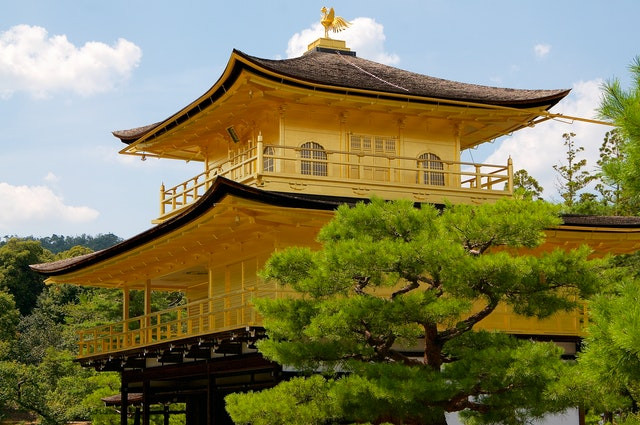
Gold has always been meaningful in Buddhism with many Buddha statues gilded in gold. Gold represents many things in Buddhism including the sun, wisdom, joy, and the most important in the teachings of Buddhism, enlightenment. The Golden Pavilion, resplendent in gold, represents the paradise waiting for you on the other side of enlightenment.
※ Encyclopædia Britannica, Inc., "Pure Land Buddhism" ※ World History Encyclopedia, "Kinkakuji"
Writer's Pick
Exploring the Grounds of Kinkaku-ji
Without further ado, let’s have a look at the Golden Pavilion and other noteworthy structures in the temple.
Kinkaku 金閣
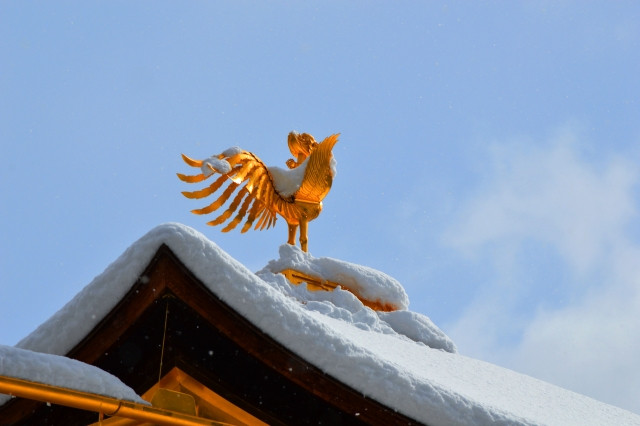
Let’s start off with the famous Golden Pavilion itself. Located on the banks of Kyoko-chi pond, the tranquil waters, neatly trimmed trees, and blue skies make the golden structure shine even brighter. A gold phoenix statue stands at the tip of the building, the building whose three floors are each of a distinct architecture style all coming together in a blend of the finest architecture that defines the Muromachi period.
Kyoko-chi 鏡湖池
The pond right next to Kinkaku reflects the image of the temple on its surface hence its name. In case you didn’t know, the kanji for kyo 鏡 means mirror. As a standalone kanji, it is read as kagami or mirror. At the centre of the pond are several islands including the largest Ashihara-jima 葦原島 that is representative of the country’s islands. The rocks surrounding the island function as protection in retaining the island’s form. A popular way to take photos here is to capture the shimmering Kinkaku in the reflection of the pond, no matter the season.
Ryumon-taki 龍門滝
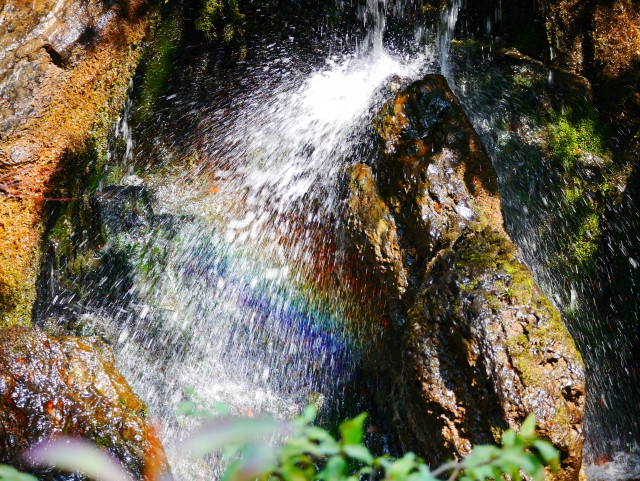
Directly translated to mean Dragon Gate Waterfall, Ryumon-taki is a waterfall based on a Chinese proverb deng long men 登龙门 which means climbing to success. The proverb was derived from a story wherein a carp climbed a waterfall and turned into a dragon. At the base of the waterfall is a rock formation that resembles a carp.
Hakuja no Tsuka 白蛇の塚
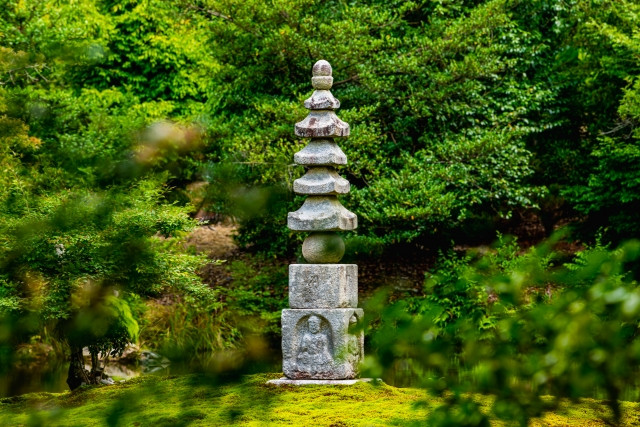
A small make-shift pagoda made up of round stones is the Hakuja no Tsuka, aka White Snake Mound. The rock mound stands on an island in another one of the temple’s ponds called Anmin-taku. It is believed that the stone pagoda houses the Saionji clan (the land’s original owners)’s guardian deity.
Sekka-tei 夕佳亭
A teahouse that wasn’t originally part of the temple complex, Sekka-tei was added sometime during the Edo Period. Here, you can enjoy a break for some matcha and accompanying wagashi (traditional Japanese sweets). The sunset over Kinkaku is particularly breathtaking when viewed from here so time your visit well.
Nearby Shops to Visit
For a break before your next Kyoto destination visit, consider any one of these located nearby Kinkaku-ji:
Kinkaku-An Tearoom
With traditional Japanese-style rooms, they serve authentic Japanese cuisine including Kyoto soba and Yudofu. They also have a reservation-limited Iroha afternoon tea service in a Japanese-Western fusion style.
Kinkaku Soft
A must-eat when visiting the area is Kinkaku Soft’s gold leaf ice-cream. Made in the image of the Golden Pavilion, it is a cone of soft serve ice cream topped with REAL GOLD. How cool is that! And it’s only 880 yen.
Access, Opening Hours, Admission Fees
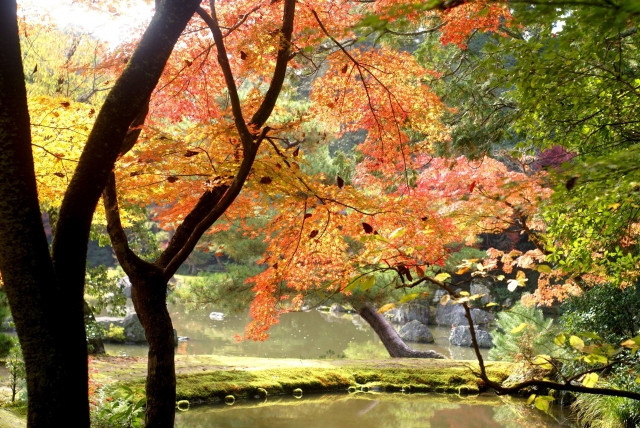
Getting to Kinkaku-ji
Bus is the most recommended mode of transport in Kyoto. The nearest bus stop to Kinkaku-ji is Kinkakuji-michi. From there, walk another 3 minutes to reach the temple. Nearby Kinkaku-ji are two other UNESCO World Heritage properties, namely Ryoan-Ji and Ninna-Ji you can consider visiting.
For more about Kyoto Buses, check our dedicated article:
Kyoto Travels Made Easy with a Kyoto Bus Pass!
Opening Hours
Generally 9:00~17:00 unless there are special events.
Admission Fees
400 yen (Adults), 300 yen (Junior High/Elementary School Students)
※ Rinzai Sect Sokokuji School, "Access"
Takeaway
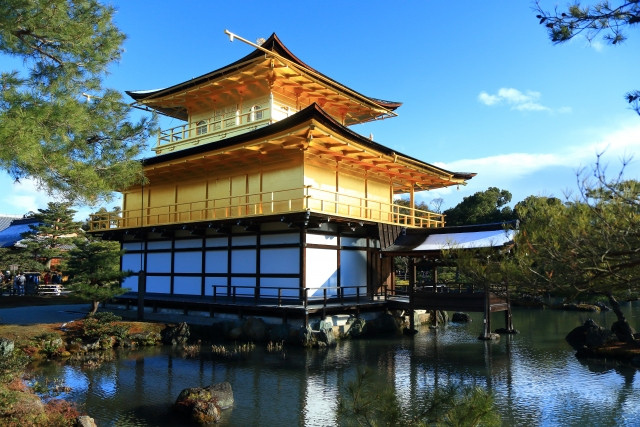
Kinkaku-ji, officially named Rokuon-ji, is one of the must-visit temples in Kyoto aside from Kiyomizudera and To-ji. Rich in history, architecture, spirituality, and beautiful scenery, you are sure to enjoy a trip in tranquillity at this sacred religious site. While it may seem “overrated” because it tops almost every list of must-visit places in Kyoto, the sheer number of positive reviews by previous visitors prove that it is worth a visit.
For a 3-day itinerary of Kyoto to help you out, we have
Taking a trip down the Old Capital: A 3-day Kyoto Itinerary











.png)









.jpg)












